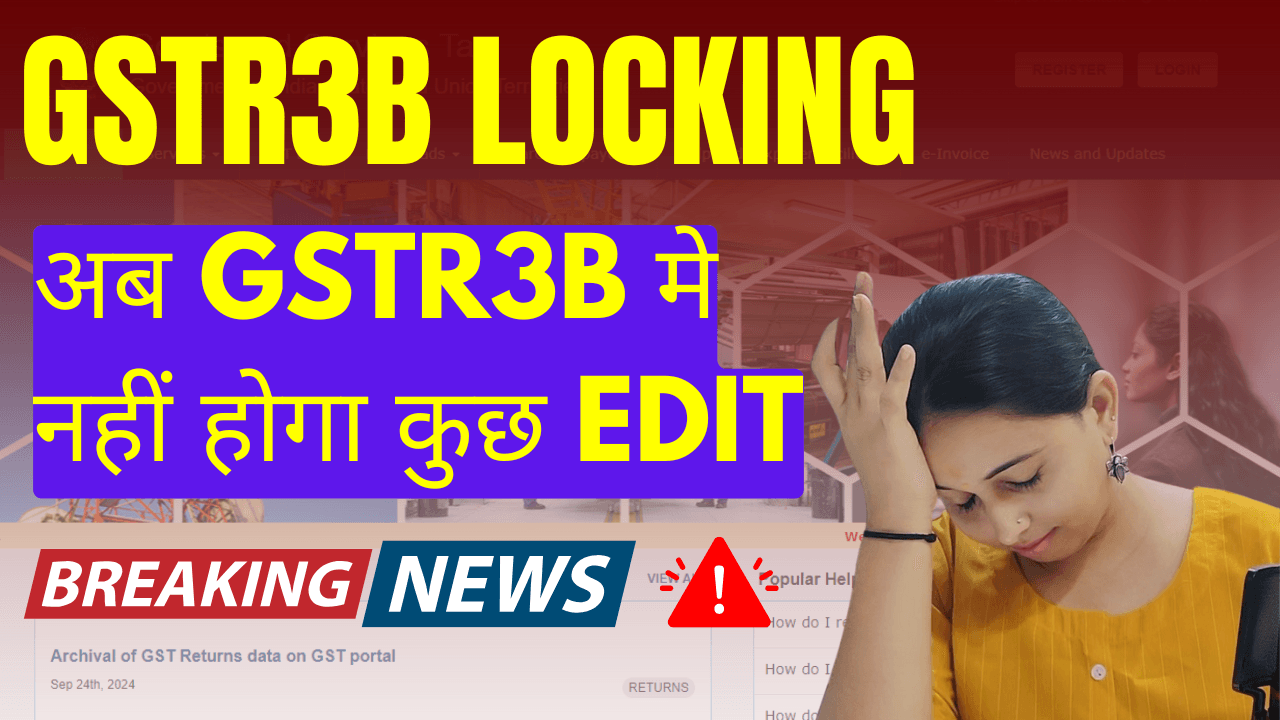Auto-Populated Values in GSTR-3B
Auto-Populated Values in GSTR-3B The Goods and Services Tax Network (GSTN) continues to improve its return filing processes to make compliance easier for taxpayers. One of the key features introduced recently is the pre-filled GSTR-3B form, aimed at reducing human errors and improving accuracy in return filings. As part of its ongoing efforts, the GSTN has now announced an important update that will take effect from the January 2025 tax period—the hard-locking of auto-populated values in GSTR-3B.
In this detailed guide, we will break down everything you need to know about these changes, how they impact your filing process, and what steps you need to take to stay compliant.
Understanding the Pre-Filled GSTR-3B Form
The pre-filled GSTR-3B form is an initiative introduced by the GSTN to assist taxpayers in filing their returns with minimal manual intervention. Here’s how the form works:
- Auto-Population of Tax Liabilities: The tax liability section in GSTR-3B is automatically populated based on the details provided in GSTR-1, GSTR-1A, or the Invoice Furnishing Facility (IFF). Auto-Populated Values in GSTR-3B These forms capture information about your outward supplies, and this data is seamlessly transferred to GSTR-3B.
- Auto-Population of Input Tax Credit (ITC): Auto-Populated Values in GSTR-3B Similarly, the ITC details are auto-populated from GSTR-2B, which summarizes all your inward supplies, providing you with accurate ITC claims.
- System-Generated PDF: For easy reference, the GST portal provides a detailed, system-generated PDF of the pre-filled GSTR-3B form. This document serves as a useful tool for taxpayers to review their tax liabilities and ITC claims before submitting the return.
This automation ensures greater accuracy, minimizes manual errors, and speeds up the filing process.
Amendment Facilities Available to Taxpayers
To further support accuracy in return filings, the GSTN has introduced two important features that allow taxpayers to amend their records:
- GSTR-1A for Amendments in Outward Supplies: Taxpayers who have incorrectly declared outward supplies in GSTR-1 or IFF can make amendments through GSTR-1A. This form provides an opportunity to correct any errors before finalizing the GSTR-3B. By using GSTR-1A, taxpayers can ensure that their tax liabilities are accurately reflected in the return.
- Invoice Management System (IMS) for Inward Supplies: Another valuable tool is the Invoice Management System (IMS), which allows taxpayers to manage their inward supplies effectively. Through the IMS, taxpayers can review the invoices uploaded by their suppliers and take informed actions—accept, reject, or mark them as pending. This ensures that only valid ITC claims are made in GSTR-3B, further enhancing accuracy.
These facilities give taxpayers more control over the accuracy of their tax returns, providing ample opportunities to correct discrepancies before final submission.
The Upcoming Hard-Locking of Auto-Populated Values in GSTR-3B
Starting from the January 2025 tax period, the GST portal will implement a major change—hard-locking of the auto-populated values in GSTR-3B. This means that taxpayers will no longer be able to make changes directly in the pre-filled GSTR-3B form.
What Does Hard-Locking Mean?
- No Direct Edits in GSTR-3B: Once the values are auto-populated in GSTR-3B from GSTR-1/1A/IFF and GSTR-2B, taxpayers will not be able to manually alter these figures. Any changes required in the outward supplies or ITC claims will have to be made in GSTR-1A or through the IMS.
- Enhanced Accuracy: The hard-locking mechanism is designed to ensure higher accuracy in return filings by eliminating the possibility of manual errors or discrepancies between GSTR-3B and other GST returns.
How Should Taxpayers Prepare for This Change?
With the introduction of hard-locking, taxpayers must adopt a proactive approach to ensure their returns are accurate from the outset. Here are some steps you can take to prepare:
- Regularly Reconcile Your Outward and Inward Supplies: Make it a practice to reconcile your outward supplies as declared in GSTR-1 or IFF with the actual sales data. Any discrepancies should be corrected via GSTR-1A before filing GSTR-3B.
- Use the Invoice Management System (IMS): Ensure that all inward supplies are properly recorded and reviewed through the IMS. This will help in making informed ITC claims and prevent errors in GSTR-3B.
- Timely Amendments: Make use of GSTR-1A for any amendments required in your outward supplies before the filing of GSTR-3B. This will ensure that your tax liability is accurately reflected in the return.
- Stay Informed: Keep up with any further updates from the GSTN regarding the hard-locking of auto-populated values. It is crucial to stay informed and adapt your compliance processes accordingly.
Key Takeaways
The upcoming hard-locking of auto-populated values in GSTR-3B is a significant change that will impact the way taxpayers file their returns. Auto-Populated Values in GSTR-3B While this move will enhance accuracy and reduce errors, it also places the responsibility on taxpayers to ensure their data is correct at the source—whether it’s the outward supplies declared in GSTR-1/IFF or the inward supplies managed through GSTR-2B.
To summarize:
- From January 2025, taxpayers will no longer be able to edit the auto-populated values in GSTR-3B directly.
- Changes must be made through GSTR-1A (for outward supplies) or IMS (for inward supplies).
- Proactive reconciliation and timely amendments will be key to staying compliant.
By embracing these changes and making the necessary adjustments to your return filing process, you can ensure a smooth transition and avoid any potential penalties or issues with your GSTR-3B filings.
Stay tuned to the GST portal for further updates, and start preparing today to ensure compliance with the upcoming hard-locking rules.
Disclaimer: The information in this blog is based on the latest updates as of October 17th, 2024. Please consult with your tax advisor or check the official GST portal for the most current details.
For More Information : https://taxgyany.com/
https://youtu.be/L6mxL27FZBg?si=LD0Ty4W0kFrXrKCT

